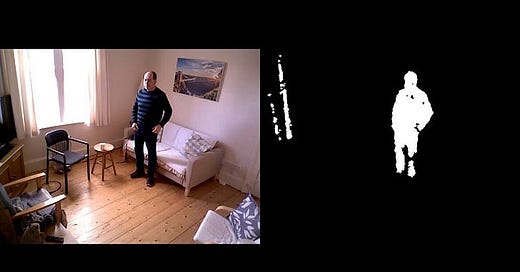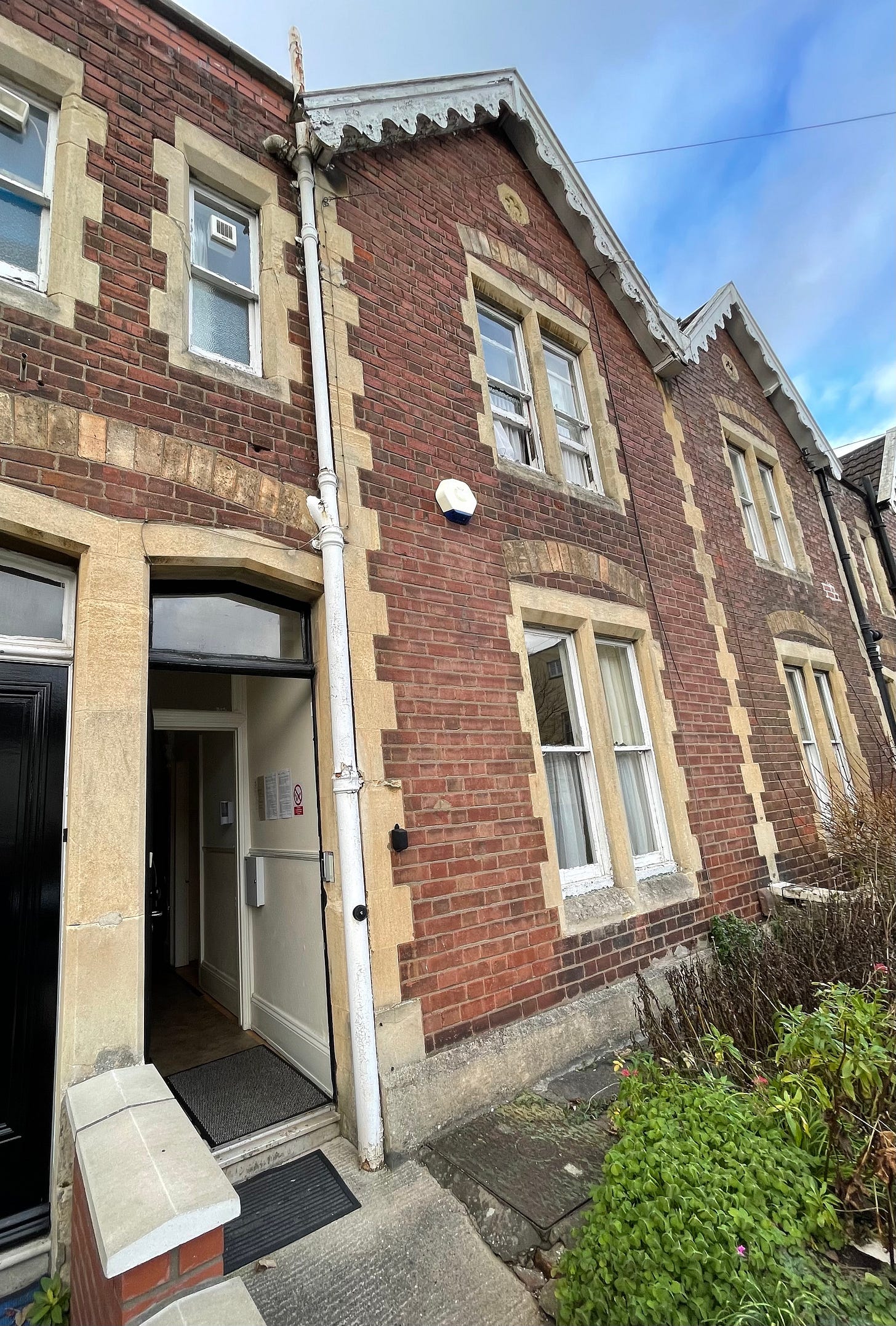This week I’ve been to visit a terraced house in Bristol. It was nothing special - it felt like student accommodation or a cheap AirBnB. But this was the site of a remarkable experiment which might accelerate the search for a cure for Parkinson’s.
I had come to meet a leading neurologist and Bristol University academic Dr Alan Whone and his doctoral student Dr Cathy Morgan to learn about what I suppose you could call the Parkinson’s Big Brother House. They have been running a research programme which involved recruiting 24 people, 12 with Parkinson’s and 12 without, to come and spend five days in the house - not all together but at different times
(You can hear my conversation with Alan and Cathy here.)
Every room in the house is packed with sensors and cameras, designed to capture not the emotions of the “housemates” but their every physical movement. “There are sensors measuring use of the appliances, the TV, the kettle, the microwave,” Cathy Morgan explains, “sensors looking at the water pipes, the usage of hot and cold water, and sensors which can detect when you come into a room or leave it. And then the participants in our study also wore wearable devices, one on each wrist, which looked at the movement of their arms.”
The aim is to find a more granular way of measuring the symptoms of Parkinson’s and the project was born out of the failure of one of the most famous drug trials of recent years. Alan Whone led the hugely ambitious GDNF trial which saw volunteers have a device implanted in their heads through which a new drug could be piped direct into the brain.
Those who received the drug felt better and their brain scans improved - but not enough for the trial to be deemed a success. “We weren't able to prove statistically that the drug, GDNF, had restored them better than if they'd been on placebo.”
But the problem was that the way of measuring the symptoms of the condition is very crude: “We're still relying on tests to understand how someone with Parkinson’s is doing that were developed in the 60s and 70s.”
Frustrated, Dr Whone realised that proving new drugs worked would be a struggle unless new ways of accurately measuring Parkinson’s symptoms - and therefore detecting any improvement - could be found.
Then he met a University of Bristol colleague and a lightbulb went on. Professor Ian Craddock, an electrical engineer whose research focuses on health tech, is the man behind the sensor-packed house. It’s the centrepiece of an £11m research project called SPHERE ( Sensor Platform for Healthcare in a Residential Environment) which has been running since 2013.
It’s an ambitious project involving teams of engineers, computer scientists and doctors to develop health monitoring technology that could eventually be deployed anywhere: “SPHERE is looking at the acceptability and feasibility and performance that you get from putting sensors in people's homes to measure changes in their health state”, explains Professor Craddock.
The house had already been used in studies of heart patients recovering from surgery, orthopaedic patients, and people with dementia. Now Dr Whone and Dr Morgan set about using it to try to develop a new way of measuring Parkinson’s to replace what patients like me are familiar with - being asked to walk up and down the consultant’s office. or open and close your hand rapidly.
First, says Alan Whone, they had to work out whether their “housemates” would relax into the experience: “Was it okay living with this big brother style environment? Could they cope with that? And secondly, we were collecting vast amounts of data, in this testbed type way, to begin to work out what would give us the best signal of how Parkinson's was progressing.”
I was given a flavour of the experience, with my movements in the sitting room being captured by a Microsoft Kinect camera, as I got up from the sofa and walked around. The following day I was sent the video, which also had an anonymised silhouette version of me, and Dr Whone interpreted what he described as symptoms of Parkinsonism in my movements - “an absence of right arm swing, stooped posture and ‘en bloc’ turning (rather than pivot turning).”
The aim longer term is to take the technology and install it in homes for a year or more during a trial of a new treatment:
“It is easy to imagine,” says Dr Whone, “the vast number of turns and sit to stands that could be captured in a person's home over a year, compared with investigating such movements via clinic-based trial assessments occurring on a 4-monthly basis.”
In the UK and elsewhere there are a number of other experiments going on to measure the progress of Parkinson’s, many of them using smartwatches and other. wearable devices. But Cathy Morgan says the sensor-packed house gives far more contextual information than you would get from a smartwatch alone: “If someone's arm is very still, as picked up by a wearable device, they could be sat watching TV, very comfortably, or they could be - as people with Parkinson’s sometimes get - frozen and unable to move.”
Developing and testing the systems in the SPHERE house and then deploying them in homes is a lengthy and challenging business but there is a big prize in prospect if they succeed. Alan Whone says the hope is to “use this to measure the progression of Parkinson's, and to prove whether a drug works or not in shorter timeframes with fewer numbers of people coming into studies, which are cheaper to do, which means we'll be able to accelerate the number of research studies that can be done.”
And that would mean getting effective drugs out of testing and into the clinic faster. I’m sure I am not the only PwP* who will be keeping an eye on the Big Brother house and cheering on the efforts of its housemates and their observers.
*Person with Parkinson’s
For a TikTok tour of the Big Brother House with Dr Cathy Morgan click here.





Fascinating approach and a great use of technology - hopefully their study will prove to be useful both in terms of the results and the methodology.
You have to wonder if there's more than can be done in terms of both proactive and reactive monitoring of neurological conditions using wearables, especially considering the sophistication of recent devices. I've ME/CFS, and use my Apple Watch data as a crude guide for my energy consumption, but it was interesting to see that it flagged my VO₂ max levels, which are often low for ME/CFS and other conditions.
It's obviously very early days for such things, but hopefully the various manufacturers and healthcare providers will be able to navigate the harrowing levels of legislation involved.
This is really interesting, thank you